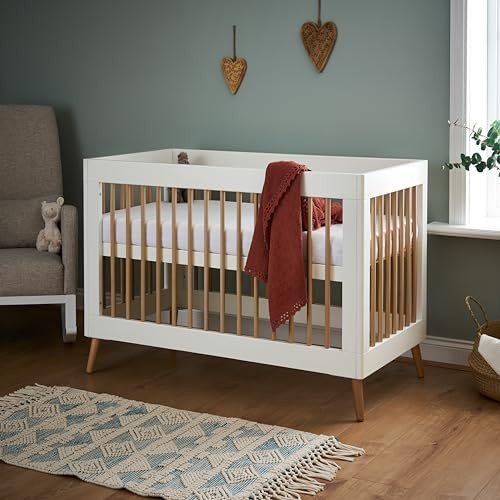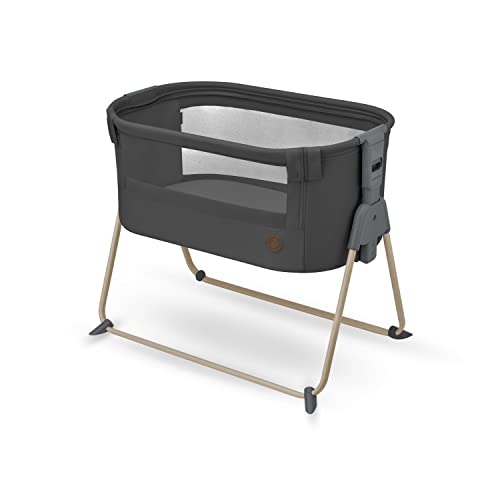
Best Crib
FollowOverview
-
Sectors Graduate IT Contractor
-
Posted Jobs 0
-
Viewed 36
Company Description
The Best Baby Cot To Bed Techniques To Rewrite Your Life

Transitioning from Baby Cot to Bed: A Comprehensive Guide for Parents
The journey from a baby cot to a bed marks a significant turning point in a child’s advancement. It represents independence and an action towards maturing. Nevertheless, this shift can often be daunting for both moms and dads and children. Understanding the procedure, the ideal timing, and how to make the shift smoother can substantially assist in this journey. This article explores the fundamentals to think about when transitioning your child from a cot to a bed, consisting of common FAQs, suggestions, and a structured plan to make sure the procedure is as seamless as possible.
Why Transition from a Cot to a Bed?
Developmental Milestones
Transitioning to a bed is generally triggered by several factors:
-
Physical Growth: As kids grow, they outgrow their cots. The average size for a convertible cot is usually implied for infants up to 3 or 4 years old.
-
Cognitive Development: As young children end up being more curious and aware of their surroundings, they might attempt to climb out of their cots, posturing security risks.
-
Potty Training: Once a kid is potty trained, they may require easier access to the restroom, which a bed can assist in.
-
Brother or sisters: The arrival of a new sibling can also require this shift, as the cot might need to be maximized.
When to Make the Transition
There is no one-size-fits-all answer to when a child ought to shift from a Sale cot to a bed. However, here are some indications that it might be time:
- Climbing Out: If the child is trying to climb out often.
- Age Consideration: Many professionals recommend this transition around the age of 2 to 3 years, although every child is special.
- Need for Independence: Children may express a desire for a big-kid bed.
Types of Beds Suitable for Toddlers
Not all beds are produced equal when it comes to kids. Here’s a breakdown of ideal bed types:
| Bed Type | Description | Pros | Cons |
|---|---|---|---|
| Toddler Bed | Smaller, lower to the ground, frequently with side rails. | Size-appropriate for young children; stability. | Restricted lifespan as they grow out of quickly. |
| Single Bed | Standard size bed implied for older children. | Lasts longer; can be utilized for years. | May be too huge for a toddler; threat of falling. |
| Convertible Crib | Crib that transforms into a young child bed. | Versatile; conserves money in the long run. | Can be pricey; some might not offer full-sized choices. |
| Loft Bed | Raised bed with area beneath for play or storage. | Optimizes area; enjoyable for kids. | Not appropriate for very young kids; security issues. |
Actions to Transition Smoothly
Transitioning to a bed can be simplified with mindful preparation. Here’s a detailed guide:
1. Prepare the Space
- Select a Location: Decide where the bed will be positioned.
- Childproof the Room: Since young kids are naturally curious, make sure that furniture is steady, sharp edges are covered, and dangerous items are out of reach.
- Keep Familiar Items: Retain favorite toys and bedding to provide convenience in the new environment.
2. Introduce the Bed
- Include Your Child: Let your kid aid choose their bed or bedding to produce excitement.
- Explain the Transition: Make them understand that they are ending up being a big kid by having a big-kid bed. Usage motivating language.
3. Make the Swap
- Bedtime Routine: Keep the bedtime routine consistent. This creates familiarity and comfort throughout the transition.
- Support: Offer them peace of mind but avoid being excessively protective; it’s essential to encourage self-reliance.
4. Address Fears and Concerns
- Discuss Fears: Children may have worries of falling or the dark; discuss these openly.
- Enhance Safety: Use guard rails on the bed initially and describe what to anticipate throughout the night.
5. Screen and Adapt
- Be Patient: It might require time for your child to adjust fully.
- Stay Consistent: Maintain the nighttime routine, even when troubles develop.
Frequently Asked Questions Regarding Transitioning from Cot to Bed
Q1: How long does the transition from a cot to a bed normally take?
A1: The shift can differ considerably among children– ranging from a couple of days to a couple of weeks– as they get used to oversleeping a new area.
Q2: Should I buy an unique toddler bed?
A2: Investing in a young child bed can make the shift easier considering that they are designed with safety in mind; however, if you choose to go straight to a single bed, that can work too with the right security procedures.
Q3: What if my kid keeps rising?
A3: This is regular! Motivate them to remain in bed and develop positive reinforcement by rewarding them for remaining in bed through the night.
Q4: Is it fine to transition to a huge bed too early?
A4: Transitioning too early can cause sleep disruptions. It’s necessary to assess the preparedness of the child based upon their signs and development.
Transitioning from a baby cot to a bed is a considerable action for both kids and parents. With thoughtful preparation and understanding of the kid’s requirements, moms and dads can make the shift smoother and more satisfying. By acknowledging when to make the transition, understanding the types of beds available, and preserving a consistent routine, parents can minimize worries and cultivate a sense of security for their child during this exciting new chapter. Eventually, every child is different, and persistence is type in making this journey a favorable experience.

